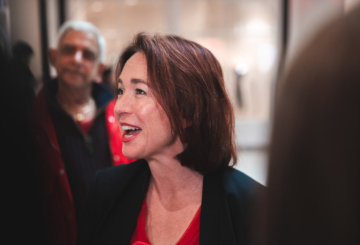그레이타운의 식수 시스템이 고장날 위험이 있습니다.유일한 수원인 보어 수원은 상태가 좋지 않습니다.2022년에 웰링턴 워터는 구멍이 너무 약해서 업그레이드할 수 없다고 보고했습니다.이제 주민들은 수백만 달러가 소요될 그레이타운의 물 문제에 대한 해결책을 선택하라는 요청을 받고 있습니다.지역 상수도에 연결할 수 있는 사우스 와이라라파 (South Wairarapa) 요금 납부자가 비용을 분담하게 됩니다.
가장 저렴한 방법은 솔저스 메모리얼 파크에 3~4백만 달러를 들여 새 구멍을 짓는 것입니다.이 계획은 주차장에서 임시 용수 시설을 없애고 다른 곳에 새 시설을 설치하여 해당 주차장을 지역 사회에 되돌릴 수 있도록 하는 것입니다.기타 옵션은 다음과 같습니다.
1.웨스트 스트리트에 있는 구 자치구 의회 운동장에 580만~680만 달러에 새 수처리 플랜트와 천공장을 건설했습니다.
2.쿠라타휘티 스트리트의 새 부지를 매입하여 610만~730만 달러에 수처리 플랜트와 천공수를 건설했습니다.
솔저스 메모리얼 파크에 위치한 현재의 물 기반 시설은 실패하고 있습니다.보어 펌프와 모터를 교체해야 하며 처리 시설 또한 매우 열악한 상태입니다.물 공급을 중단하지 않고는 지속적인 유지보수를 수행할 수 없으므로 고장 위험이 커집니다.
지난 4월, 솔저스 메모리얼 파크에 새 구멍을 지으려는 계획이 전쟁 기념비로서의 문화적 중요성 때문에 거부되었습니다.시의회는 이 계획이 상수도 시스템의 요구 사항을 충분히 해결하지 못한다고 생각했습니다.솔저스 메모리얼 파크가 승인되면 건립하는 데 1~2년이 걸릴 수 있습니다.웨스트 스트리트 옵션은 승인 및 건설에 2-3년이 걸릴 수 있습니다.이 부지는 토지의 향후 용도에 대한 지역 토론과 관련이 있습니다.
쿠라타휘티 스트리트 (Kuratāwhiti St) 옵션은 건설하는 데 3~5년이 걸릴 것입니다.모든 옵션에는 폐수와 빗물을 새로 연결해야 합니다.그레이타운 (Greytown) 하수 플랜트가 꽉 찼기 때문에 현재 신규 연결은 중단된 상태입니다.
이 프로젝트에 자금을 지원하는 방법에 대한 협의는 월요일에 시작되어 10월 9일에 마감됩니다.거주자는 지구 전체 요율 또는 지구 및 그레이타운 목표 요율을 혼합하여 선택할 수 있습니다.가장 비싼 옵션은 연간 요금을 146달러 인상할 수 있지만 가장 저렴한 옵션은 80달러입니다.9월 28일 토요일 오전 10시부터 오후 12시까지 솔저스 메모리얼 파크에서 공개 행사가 열릴 예정입니다.






























































